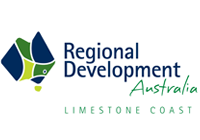District Council of Grant
About the profile areas
The 2023 Estimated Resident Population for District Council of Grant is 9,044, with a population density of 4.77 persons per square km.
Location and boundaries
The District Council of Grant is located in the Limestone Coast Region of South Australia, about 450 kilometres south of the Adelaide CBD and 450 kilometres west of the Melbourne CBD. The District Council of Grant is bounded by the Wattle Range Council area in the north, the Victorian border in the east, and the Southern Ocean in the south and west. The District Council of Grant surrounds the City of Mount Gambier.
Traditional Owners
The original inhabitants of the District Council of Grant were the Booandik Aboriginal people.
Name origin
The District Council of Grant is named after Lieutenant James Grant who first sighted the Port MacDonnell area in 1800 as he sailed past the area.
Important
|
Population9,044 2023 ABS ERP |
Land area1,897 square km |
Population density4.77 persons per square km |
Settlement history
European settlement dates from the 1840s, with land used mainly for sheep grazing. Population was minimal until the 1860s when Port MacDonnell developed as a port, shipping wool and wheat. Growth took place during the 1860s and 1870s, with agriculture being an important industry. The population declined during the late 1800s, largely due to the port not being connected to the south-east railway network. From the early 1900s some boat sheds and shacks were built in the coastal areas. From the 1930s timber milling became an important industry in the north, around Tarpeena. Significant development occurred during the post-war years. The population was relatively stable between 1991 and 2011, between 7,400 and 7,600 people.
Land use
The District Council of Grant is predominantly rural, with small townships at Port MacDonnell and Tarpeena, and various small coastal holiday communities. The Council area encompasses a total land area of about 1,900 square kilometres. Land is used largely for agriculture, particularly dairy, beef and sheep farming, and seed and grain growing, with some horticulture. Forestry and tourism are also important industries, with the rock lobster industry being significant at Port MacDonnell.
Transport
The District Council of Grant is served by the Princes Highway.
Major features
- Major features of the District Council include Canunda National Park,
- Carpenter Rocks Conservation Park,
- Dingley Dell Conservation Park,
- Douglas Point Conservation Park,
- Ewens Ponds Conservation Park,
- Finger Point Conservation Park,
- Lower Glenelg River Conservation Park,
- Nene Valley Conservation Park,
- Penambol Conservation Park,
- Piccaninnie Ponds Conservation Park,
- Telford Scrub Conservation Park,
- Lower South East Marine Park,
- Bucks Lake Game Reserve,
- Piccaninnie Ponds Karst Wetlands,
- Lake Bonney,
- Mount Schank,
- Cape Northumberland Heritage and Nature Park,
- Woolwash Interpretive Centre,
- Port MacDonnell & District Maritime Museum,
- Penguin Viewing Platform,
- Port MacDonnell Golf Club,
- Mount Gambier Airport,
- Tarpeena Mill,
- Bay Wave Sculpture,
- Clarke Park Picnic Reserve,
- Germein Reserve,
- Lions Park Reserve,
- Tenterden Reserve,
- Volunteer Park,
- and various beaches,
- rock pools and pontoons.
Included areas
- The District Council of Grant includes the localities of Allendale East,
- Blackfellows Caves,
- Burrungule (part),
- Canunda (part),
- Cape Douglas,
- Caroline,
- Carpenter Rocks,
- Caveton,
- Compton,
- Dismal Swamp,
- Donovans,
- Eight Mile Creek,
- German Creek,
- Glenburnie (part),
- Kongorong,
- Mil-Lel,
- Mingbool,
- Moorak,
- Mount Schank,
- Nene Valley,
- OB Flat (part),
- Pelican Point,
- Pleasant Park,
- Port MacDonnell,
- Racecourse Bay,
- Square Mile,
- Suttontown (part),
- Tantanoola (part),
- Tarpeena,
- Wandilo,
- Wepar (part),
- Worrolong (part),
- Wye and Yahl.
